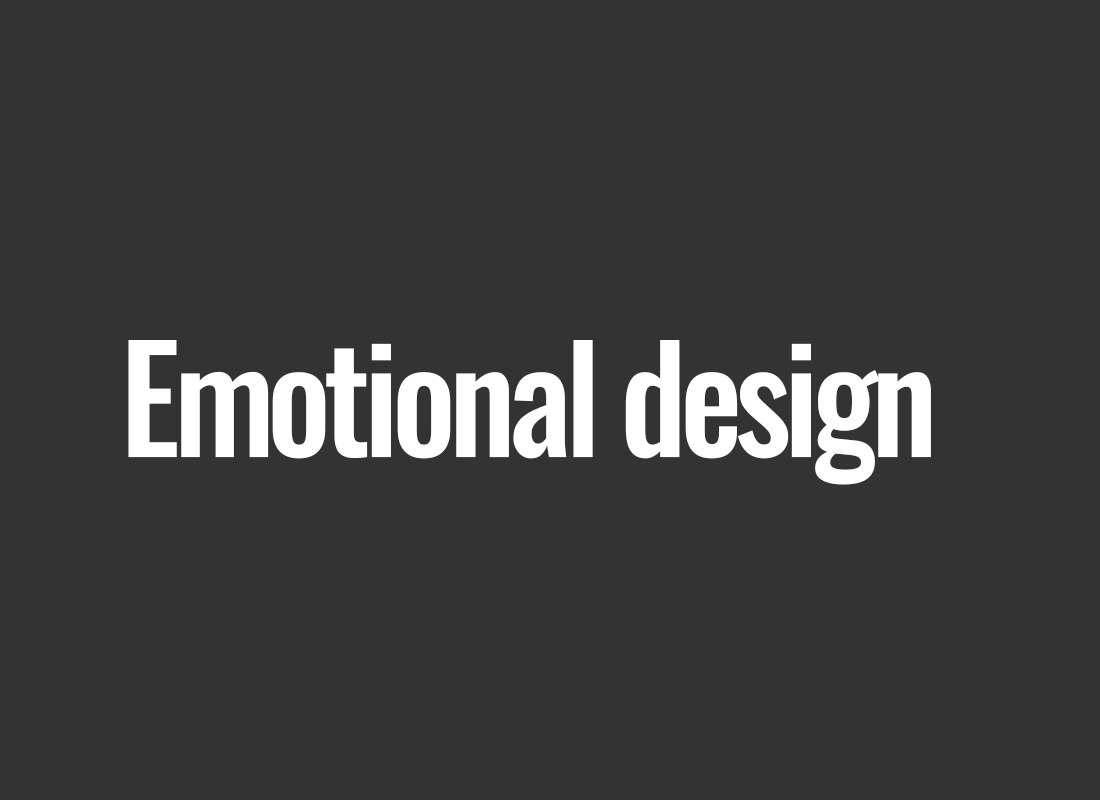Emotional design
In today's dynamic world, where competition in UX, e-commerce, marketing, and business reaches peak levels, designing products and services becomes an art that not only attracts attention but also builds lasting relationships with users. In this vast field, emotional design emerges as a powerful tool capable of delving deep into user psychology and creating unforgettable experiences. It's more than just aesthetics—it's the art of manipulating emotions to create a holistic experience that goes beyond the mere functions of a product or service.
Emotional design, one of the most fascinating trends in design, emphasizes evoking specific feelings in users through the use of various visual and sensory elements. It's worth delving into this topic to understand the benefits it brings to the UX, e-commerce, marketing, and business industries.
The Power of Emotions in Design
Emotional design is not just about aesthetics or appearance. It's a comprehensive design strategy that explores the impact of visual, auditory, and sensory elements on user emotions. At the core of this concept is the belief that connecting with the user on an emotional level contributes to greater engagement and loyalty.
In the UX field, emotional design is a crucial part of creating interfaces that are not only intuitive but also provoke specific emotional reactions. For example, websites with emotional design can use subtle animations and colors to evoke feelings of pleasure and tranquility in users, encouraging them to spend more time on the site.
In e-commerce, this strategy significantly influences shopping experiences. Personalization, adapting interactions to individual customer preferences, is a key element of emotional design. Online stores adjust to a customer's purchase history, offering personalized deals and presenting products in a way that reflects their taste. This benefits not only the seller, increasing the chances of making a sale, but also the customer, who experiences a more intimate and individual approach.
In marketing, emotional design aims to build strong relationships between the brand and the consumer. Ads that evoke positive emotions not only capture attention but also leave a lasting impression. The use of humor, sentimentality, or surprise in advertising campaigns makes the brand more human, and customers feel an emotional connection, leading to greater loyalty.
In business, emotional design impacts relationships with customers and employees. Office projects that consider aesthetics and comfort can improve work efficiency and increase team engagement. Internal communication, based on emotional elements, builds a strong organizational culture.
Emotions in Practice
- E-commerce: Personalization for a unique experience. The XYZ online store has implemented personalization in the most advanced way. When a customer logs in, they not only see product recommendations tailored to their previous purchases but also experience visual changes based on their preferences. The site's color scheme, product layout, and even promotional content are adjusted to the customer's previous actions, making the user feel not only noticed but also connected to the brand on a very personal level.
- UX: Shaping positive experiences. The ABC mobile app, designed for health enthusiasts, applied emotional design to help users maintain motivation for regular exercise. The app's interface is not only intuitive but also uses colors and sounds associated with positive emotions. Each completed workout is accompanied by a short animation with exploding colors and an inspiring melody, creating a sense of satisfaction and joy for the user.
- Marketing: Building brand identity. The LMN brand's advertising campaign, specializing in ecological products, focused on an emotional message. Ads showcased the beauty of nature, emphasizing the brand's ecological values. The introduction of an animated character representing nature became the brand's symbol and evoked positive emotions. Customers, identifying with ecological values, were more inclined to choose LMN products.
Summary
Emotional design is not just a passing trend but a key element in the evolution of design in UX, e-commerce, marketing, and business. Its impact on building customer relationships, increasing engagement, and creating positive experiences is undeniable. As technology advances, we can expect even more sophisticated strategies based on the analysis of behavioral data and artificial intelligence, focusing on precisely adapting designs to individual user preferences.
It's important to emphasize that emotional design is not just a tool for designers but also a philosophy that companies should embody at every stage of customer interaction. It's about building authentic relationships based on understanding and responding to emotions.




